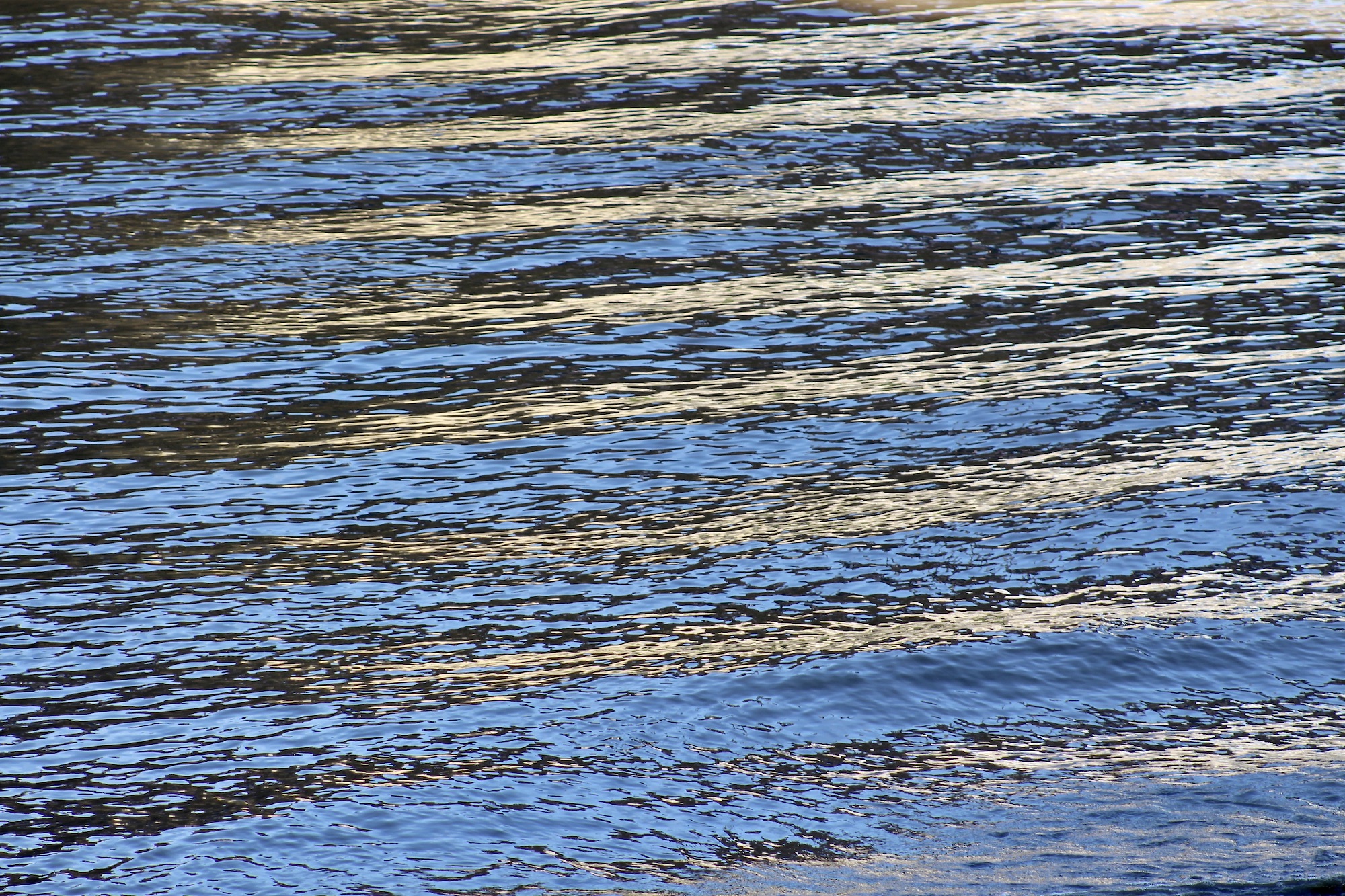
Some personal meditations on the tidal Thames.
From the photographs of Ruth Wadey, who watches over the Thames in its neatly framed borders at Twickenham, to Ian Tokelove and the Psychojographer, whose work evokes the open stretches and wildness of the Estuary, I have sensed something of the soul of the Thames. Individual and differing relationships with the river vary greatly and here are gathered just a few currents of thought from Twitter friends, and elsewhere, that have particularly struck me.
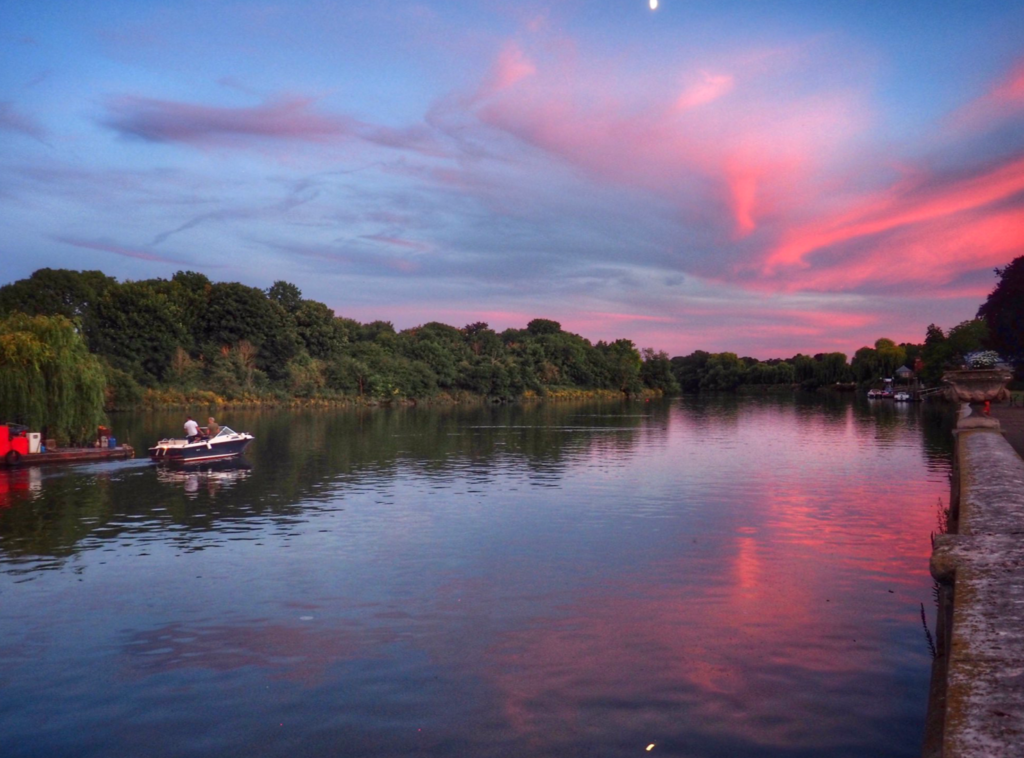
Ruth Wadey is an accredited BBC Weather Watcher whose photographs appear frequently on various television weather bulletins, often only briefly. But with longer exposure on Twitter, her feeling for the moods and soul of the Thames comes through her observations of the river’s countless shades of colour and reflections, enhanced by the ever-changing sky above. During certain high tides the river spills over the neat lawns in Twickenham below where she lives and in a similar way, her images of river and sky flow often into a spiritual dimension.
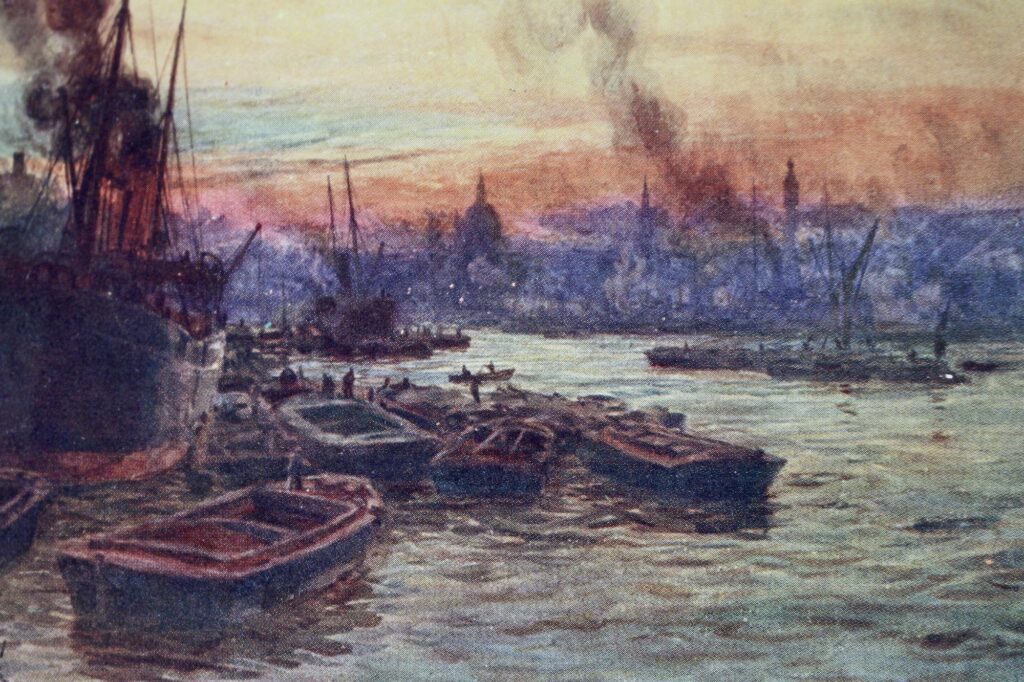
Marine artist William Wyllie (1851-1931) was particularly well-known for his views of the Thames. “He spent much of his time living on a boat in the lower Thames and painting directly from nature.” His book From London to the Nore, co-authored with his wife Marion, brings readers close to the heart of the river. Wyllie’s detailed and sympathetic observations of working life on the Thames, with all its grime and movement dictated by the rhythm of the ever-shifting tides, seem to show that he understood something of the intangible soul of the river. And his wife, in her engaging account of their journey, complements this feeling.
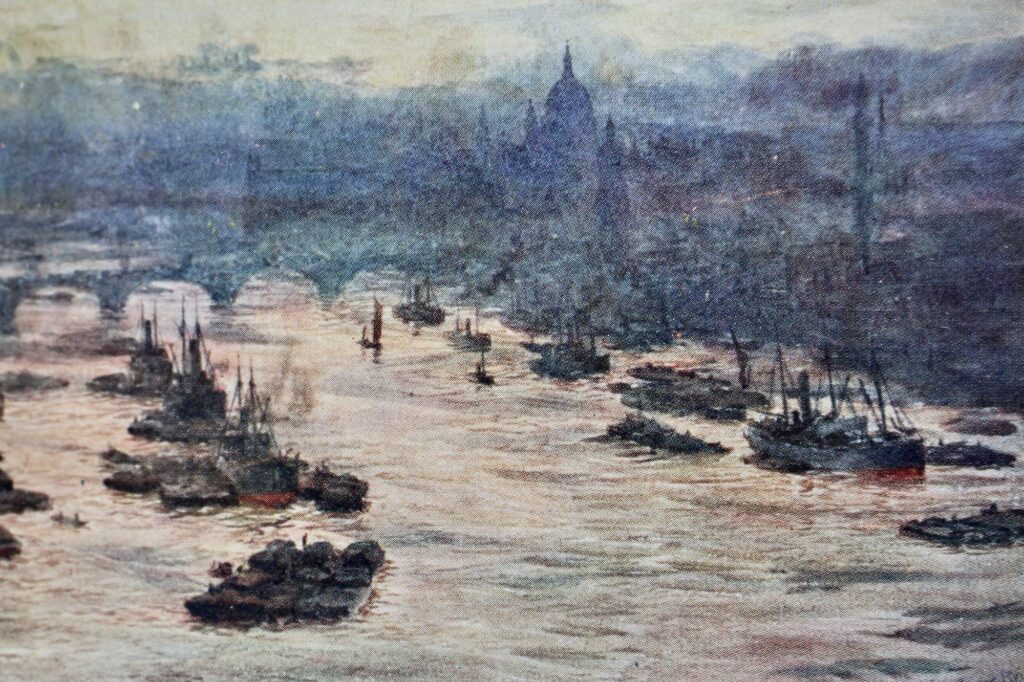
Keenly sensitive to atmosphere, Marion writes about the The Tower of London as “a wicked twelve acres, saturated with blood and tears, crowded with the ghosts of those who suffered.” But for the Thames, though she doesn’t shy away from descriptions of gruelling work, dangers and death, she reserves a happier vein with several depictions of the river throughout the book. On the occasion when they are moored near the Tower of London, she describes the beauty of the river at evening time: “Night has fallen, and the moon rides high; the dew lies thick on the deck. The Tower is only just visible against the deep grey-blue of the sky; and from hundreds of casements long beams of light are flashing. The whole river twinkles with red and green and white…” In the final paragraph of the book she strikes a chord that must resonate with many today: “Why do we as a nation think so much of going abroad? Close to our doors lie wonderful scenes.”

Wal Daly-Smith, whose life has been bound up with the Thames from boyhood, is passionate about the river. In an interview with him in an earlier article, he explained: “To have a job on the river which I love, is carrying on a tradition that goes back hundreds of years. And this makes me feel a part of the sacred life on the river.”
And evidence of past lives, traditions and occupations are discovered daily by Thames mudlarkers pacing foreshores at low tide, their eyes focussed on the latest washed-up detritus, collecting remnants and evidence of those who came before them. Poet John Challis evokes this so well in ‘Thames’, a poem part of his recently published collection The Resurrectionists, where he writes that the river:
“flips the past up like a coin to send afloat
its drowned possessions: Anglo-Saxon ornaments,
unexploded payloads, bone dice and oyster shells,
wedding rings and number plates…”
And, like Challis, some mudlarkers feel that their discoveries, piecing together fragments of history and wondering about the people who lived, worked, loved and lost on the river, add to something beyond their shoreline gathering, something spiritual.
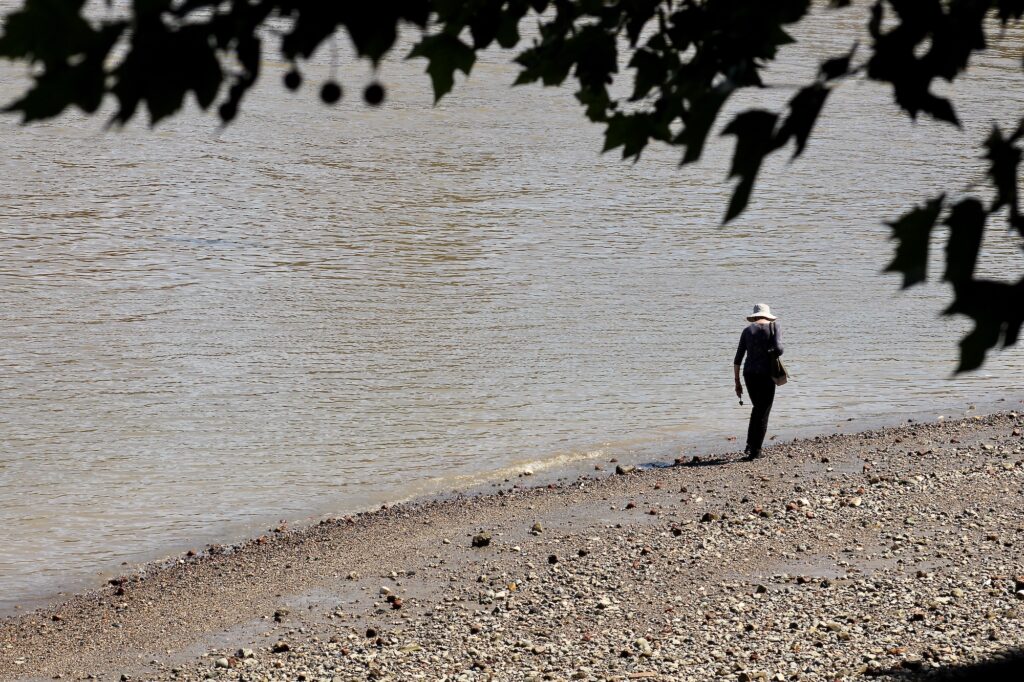
Mudlarkers’ beach findings are small enough to pack into a bag but further towards the sea there are larger remnants of the past. As well as thriving commercial activity now there is much evidence of rusted and rotted industry and a desolate beauty along the Thames Estuary coasts, with their crumbling ruins, slowly decaying boats, and an undertow of past tragedies.
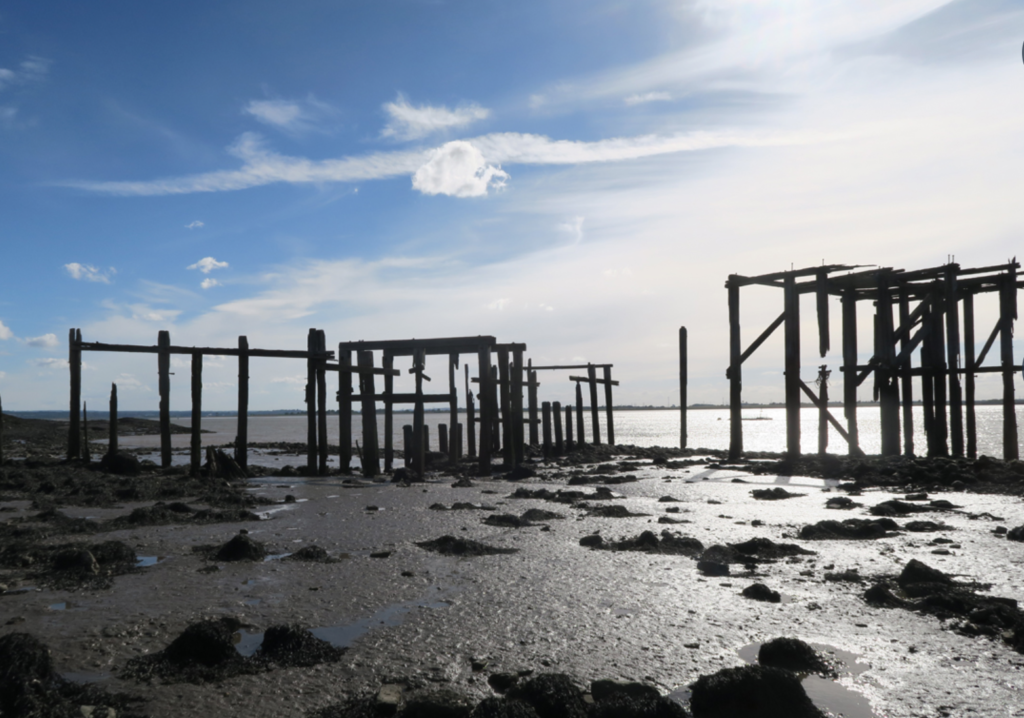
Ian Tokelove explains that “Three ruined jetties still stand at Cliffe Marshes, remnants of the explosive works which grew up in this remote, estuarine landscape between the 1890s and 1920.” He adds that the picture above “is the first of the three, its salt-bleached timbers standing 6 metres tall.”

The Psychojographer, sees and records the curious and unexpected, understanding how light and patterns in structures along the river appeal to the imagination. Much of his work is centred on the Thames and the area around the Estuary.
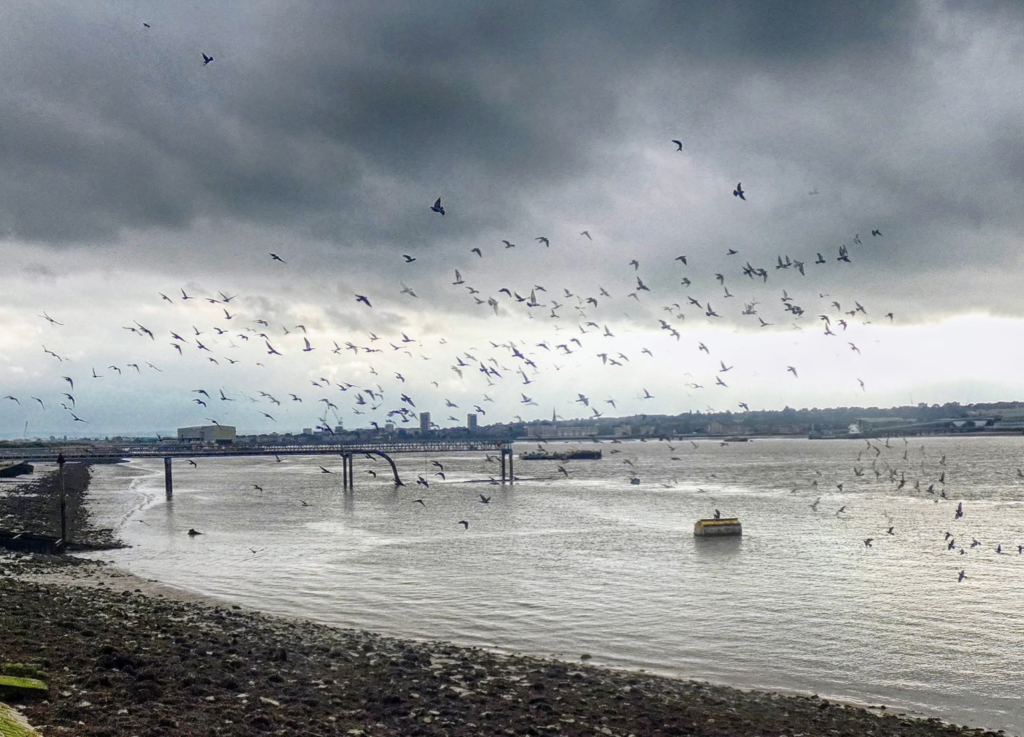
While taking and working with this image, John Franglen’s thoughts were on the belief by some mariners that seagulls bear the souls of drowned fishermen and sailors. And for that reason, gulls should never be harmed or killed, in order “to avoid injury to the deceased.” The gulls are said to “forever fly above the waterways they used to sail”, prompting his question “How many must there be upon the Thames…?”
These last pictures come from three explorers and photographers, who not only instinctively pick out striking images but reveal traces of something indefinable, beyond the simply archeological, something of the soul of the Thames.
With thanks for permission to use their words and pictures:
Ruth Wadey, Wal Daly-Smith, John Challis, IanTokelove, the Psychojographer and
John Franglen.
Further information
Ruth Wadey’s Gallery
William Wyllie at the White Dog Gallery
London to the Nore, painted and described by W.L. and Mrs Wyllie, A & C. Black, 1905
Wal Daly-Smith From the River
John Challis Poetry
Ian Tokelove Remote London
The Psychojographer on Twitter @psychojography
John Franglen is on Twitter @passedwonder
Discover more about the explosive works at Cliffe Marches
See Oxford Reference for information on seagulls bearing the souls of lost seafarers.
Five mudlarkers to follow on Twitter: Liz Anderson @liz_lizanderson; Anna Borzello @mudlarkanna; Germander Speedwell @GermanderS; and Nicola White, mudlark @TideLineArt, Mudlark_thames_larker @Rothersman